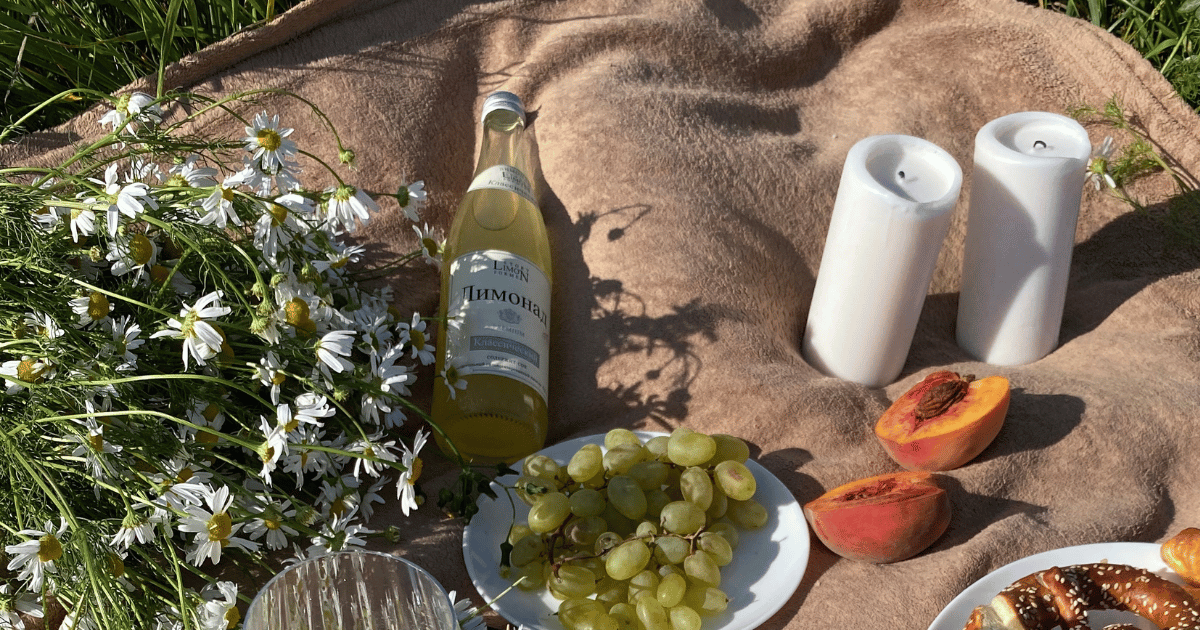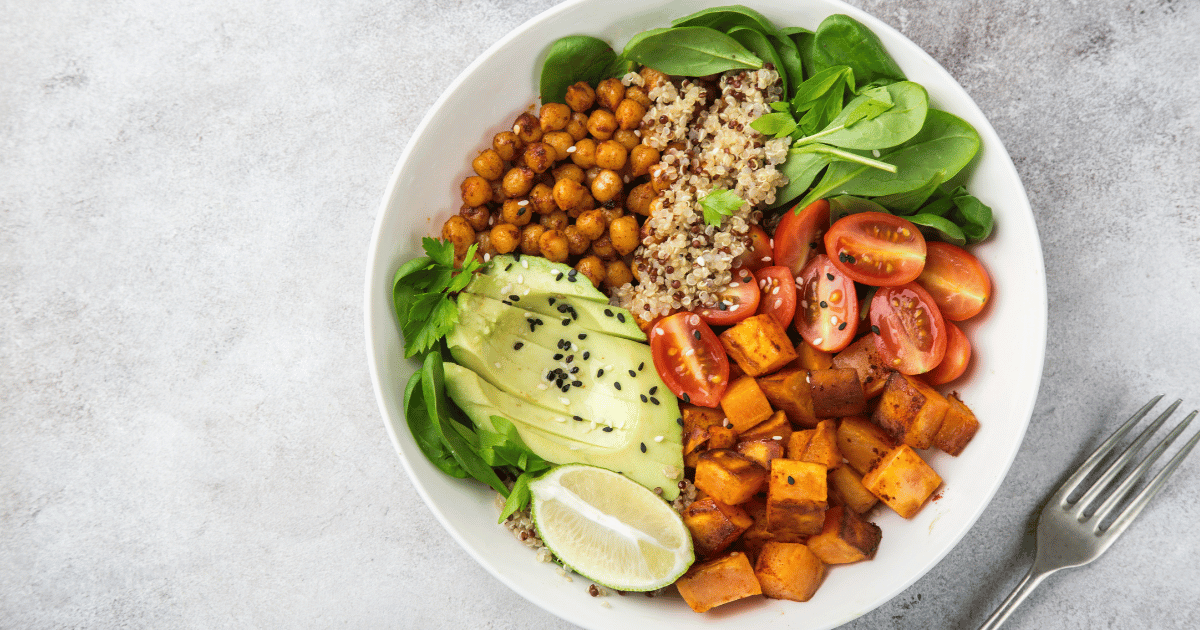Insulin Resistance Meals from a Registered Dietitian
Insulin resistance meals from a registered dietitian can be a powerful way to support your blood sugar, energy, and overall health.
If you’ve been told you have insulin resistance, you might feel confused about what to eat.
Maybe you’ve Googled “recipes for insulin resistance” or searched for a simple meal plan for insulin resistance, and found advice that feels restrictive, overwhelming, or conflicting.
As a registered dietitian who loves realistic meals, I want to offer a different perspective. Food is not about rules and rigid plans. It’s about building balanced meals that keep your blood sugar steady, support your energy, and nourish your body in a way that feels sustainable.
That’s what we call gentle nutrition: simple, flexible strategies that improve health without obsession.
Keep reading for information on how insulin resistance is just one piece of the hormonal puzzle and meal frameworks and ideas that you can use every day.
Interested in learning more about a functional approach to health? Check out my blog on the Top 6 Functional Lab Tests I Recommend to Clients & Why.
What is Insulin Resistance?
Before getting into insulin resistance meals and recipe ideas, it’s important to understand what insulin resistance is.
Insulin is a hormone that acts like a key, helping glucose (your body’s main source of fuel) enter your cells to provide energy. With insulin resistance, your cells don’t respond properly to insulin.
Glucose stays in the bloodstream while your body pumps out more insulin to try to compensate.
Over time, this mismatch can lead to fatigue, cravings, and the risk of type 2 diabetes and heart disease.
Insulin Resistance is Just One Piece of the Hormonal Puzzle
While nutrition can make a big difference in supporting insulin resistance, it’s important to recognize that it rarely exists on its own. Insulin is just one hormone in a very interconnected system. When it’s out of balance, other hormones often feel the effects too.
For example:
Cortisol (stress hormone): Chronic stress raises blood sugar and can make insulin resistance worse.
Estrogen: Higher insulin levels may increase estrogen production, which can contribute to PMS, heavy cycles, or mood changes.
Thyroid hormones: When the thyroid is sluggish, glucose metabolism slows down, leaving you feeling tired and making weight management harder.
Testosterone: Insulin resistance can drive androgen excess, sometimes showing up as acne, hair thinning, or symptoms of PCOS.
This “domino effect” helps explain why insulin resistance is often linked with fatigue, cravings, irregular cycles, and even fertility struggles.
The good news? Hormones are dynamic. They respond positively to supportive nutrition, stress management, quality sleep, and movement.
Balanced meals that stabilize blood sugar are a foundation, but addressing the bigger picture of hormone health can help lead to long-term change.
Why Meal Balance Matters for Insulin Resistance
When it comes to meals to support insulin resistance, balance is key. Protein, fiber, healthy fats, and complex carbohydrates all work together to stabilize blood sugar and keep energy steady.
For example:
Protein helps you feel satisfied and supports lean muscle.
Fiber slows digestion and improves gut health.
Healthy fats support hormones and keep meals filling.
Complex carbs provide steady energy without the quick spikes and crashes.
Focusing on balance, not elimination in your insulin resistance meals, is the most sustainable way to improve insulin sensitivity.
This is especially true for women’s health, where insulin resistance often shows up alongside issues like PCOS, irregular cycles, or difficulty with fertility.
Meal Frameworks You Can Use Every Day
Instead of strict diet plans, I often encourage clients to use simple meal frameworks. These provide structure without rigidity, making it easy to create balanced, blood sugar friendly snacks and meals. Here are a few to try:
Harvest Bowls: protein + non-starchy veggies + fiber-rich carb + healthy fat
High-Protein, High-Fiber Breakfasts: protein + produce + healthy fat
Balanced Smoothies: protein + fiber + healthy fat + low-glycemic fruit + liquid
Snacks for Insulin Resistance: protein + fiber/produce
Sheet Pan Dinners: protein + veggies + healthy fat + seasonings
Protein-Packed Soups & Stews: lean protein + veggies + fiber-rich carb + broth/spices
Each of these frameworks is flexible and easy to customize, which is why I love them.
Harvest Bowl Ideas
Harvest bowls are one of my favorite frameworks because they’re versatile, filling, and perfect for meal prep. Each harvest bowl idea includes protein, non-starchy veggies, a fiber-rich carb, and a healthy fat.
Ideas:
Salmon + roasted Brussels sprouts + quinoa + avocado
Chicken + broccoli + sweet potato + olive oil drizzle
Tofu + lentils + spinach + tahini
Turkey meatballs + zucchini noodles + chickpeas + pesto
Shrimp + cabbage slaw + brown rice + sesame oil
Ground beef + bell peppers + black beans + guacamole
Tempeh + kale + roasted carrots + almond butter dressing
Cod + cauliflower rice + green beans + olive tapenade
Edamame + bok choy + soba noodles + peanut sauce
Grilled steak + arugula + farro + feta cheese
High Protein High Fiber Breakfast
Starting your day with protein and fiber helps keep blood sugar stable and prevents mid-morning crashes. This framework pairs protein with produce and a source of healthy fat.
Ideas:
Veggie omelet with spinach + avocado slices
Greek yogurt + chia seeds + blueberries
Cottage cheese + apple slices + almond butter
Protein pancakes topped with raspberries + sunflower seeds
Smoked salmon + cucumber slices + cream cheese on gluten-free toast
Hard-boiled eggs + pear + walnuts
Tofu scramble with peppers + avocado
Overnight oats with protein powder + strawberries + flaxseed
Scrambled eggs + sautéed kale + olive oil drizzle
Chia pudding with almond milk + hemp seeds + kiwi
Snacks for Insulin Resistance
Snacks for insulin resistance matter because long gaps without eating can lead to cravings and blood sugar dips. The framework here is simple: pair a protein with produce or fiber.
Ideas:
Hummus + cucumber and carrots
Turkey roll-ups + bell pepper slices
Hard-boiled egg + apple slices
String cheese + pear
Greek yogurt + strawberries
Almonds + celery sticks
Edamame + orange slices
Protein bar + baby carrots
Cottage cheese + pineapple
Roasted chickpeas + grapes
Sheet Pan Dinner Ideas
Sheet pan meals are the ultimate weeknight insulin resistance meals. Toss your protein and veggies on one pan, season well, and bake. Add a healthy fat for flavor and satisfaction.
Sheet Pan Dinner Ideas:
Chicken thighs + zucchini + bell peppers + olive oil
Salmon + asparagus + baby potatoes + lemon olive oil drizzle
Shrimp + broccoli + cauliflower rice + sesame oil
Tofu + green beans + mushrooms + soy sauce + sesame seeds
Pork tenderloin + Brussels sprouts + carrots + balsamic glaze
Turkey meatballs + spaghetti squash + marinara + olive oil
Cod + zucchini + tomatoes + pesto drizzle
Tempeh + peppers + onions + avocado oil + fajita seasoning
Steak strips + broccoli + cauliflower + chimichurri
Chicken sausage + butternut squash + kale + olive oil
Protein-Packed Soups & Stews
Soups and stews are warming, satisfying, and perfect for batch cooking. Use lean protein, lots of veggies, and fiber-rich carbs to keep them blood sugar–friendly.
Ideas:
Lentil soup with carrots, celery, and kale
Chicken and black bean chili with tomato base
Turkey and white bean soup with spinach
Shrimp and veggie miso soup with tofu
Beef and barley stew with mushrooms
Chickpea and vegetable curry soup
Chicken noodle soup with chickpea pasta and veggies
Split pea soup with diced ham and carrots
Minestrone with kidney beans, zucchini, and kale
Coconut curry soup with chicken, peppers, and cauliflower
Insulin Resistance Meals: The Takeaway
Insulin resistance meals from a registered dietitian aren’t about strict rules or cutting out everything you love. They’re about creating balance. By focusing on protein, fiber, healthy fats, and complex carbs, you can stabilize blood sugar, support your hormones, and feel more energized throughout the day.
Remember that insulin resistance is just one piece of the puzzle when it comes to health. Stress, sleep, movement, and other hormones all play important roles too. The good news is that small, consistent steps like using simple meal frameworks can make a meaningful difference over time.
If you have been searching for recipes for insulin resistance or hoping for a simple meal plan for insulin resistance, let this blog be a reminder that you don’t need a rigid diet. What you need are flexible, nourishing meals that fit your lifestyle and help you feel your best.
If you are interested in a meal plan with everything laid out for you, I do offer a four-week plan based on your dietary needs and preferences. If that sounds like exactly what you’re looking for, book a free discovery call today to get started!


